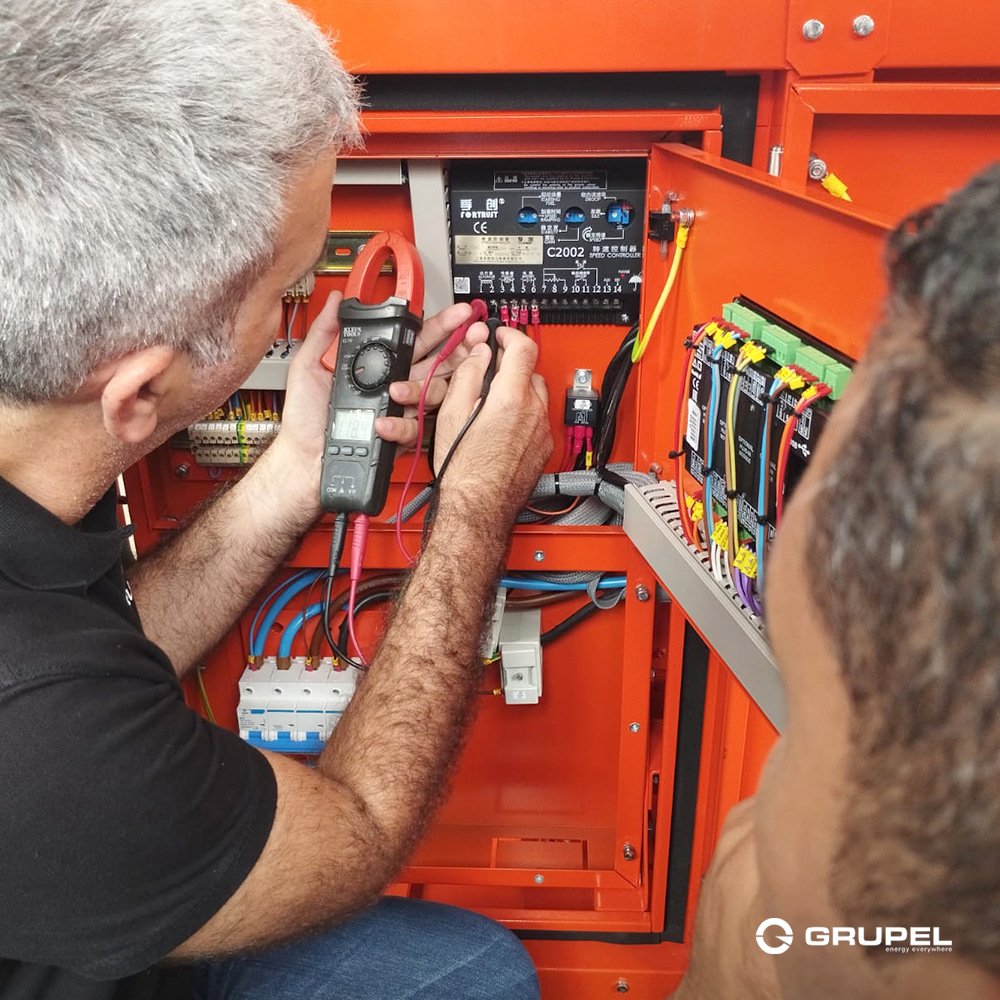- Home
- About
- GeneratorsAUTOMATIC DIESEL GENERATORSRELIABLE POWER SOLUTIONS INDUSTRY, BUSINESS & HOME
GRUPELquality, reliability and efficiency
AUTOMATIC DIESEL GENERATORS 8-81 kWA8-81kVA – the range of Smart Range diesel generators consists of products suitable for reserved power supply of residential buildings and small to medium-sized businesses. Generators are available with Grupel own brand motors .
AUTOMATIC DIESEL GENERATORS 87-700kVAThe Industrial Range 87-700kVA industrial diesel generators have been specially developed for the industrial sector and are designed to operate as a primary or emergency power source. These generators are designed for a diverse range of applications.
AUTOMATIC DIESEL GENERATORS 700-1000kVA700-1000kVA – the Heavy Range industrial diesel generator range has been specially developed to meet industrial needs with high energy requirements. This range consists of containerized diesel generators designed to provide low or medium power.
- News
- Contacts
- Home
- About
- GeneratorsAUTOMATIC DIESEL GENERATORSRELIABLE POWER SOLUTIONS INDUSTRY, BUSINESS & HOME
GRUPELquality, reliability and efficiency
AUTOMATIC DIESEL GENERATORS 8-81 kWA8-81kVA – the range of Smart Range diesel generators consists of products suitable for reserved power supply of residential buildings and small to medium-sized businesses. Generators are available with Grupel own brand motors .
AUTOMATIC DIESEL GENERATORS 87-700kVAThe Industrial Range 87-700kVA industrial diesel generators have been specially developed for the industrial sector and are designed to operate as a primary or emergency power source. These generators are designed for a diverse range of applications.
AUTOMATIC DIESEL GENERATORS 700-1000kVA700-1000kVA – the Heavy Range industrial diesel generator range has been specially developed to meet industrial needs with high energy requirements. This range consists of containerized diesel generators designed to provide low or medium power.
- News
- Contacts






